Houthis Claim Multiple Attacks on Vessels - US Mentions One Drone

Iran-backed Houthis on Monday claimed to have targeted three commercial vessels in the Indian Ocean and the Red Sea, and two US destroyers in the Red Sea.

Iran-backed Houthis on Monday claimed to have targeted three commercial vessels in the Indian Ocean and the Red Sea, and two US destroyers in the Red Sea.
The Houthi military spokesman, Yahya Saree, said the ships were the Larego Desert and the MSC Mechela in the Indian Ocean, and the Minerva Lisa in the Red Sea. He did not name the destroyers or specify when the alleged attacks took place.
US Central Command (CENTCOM) issued a statement on Monday only referring to one “uncrewed aerial system (UAS) stating that warships had destroyed it.
“At approximately 4 a.m. (Sanaa time) on May 27, U.S. Central Command (USCENTCOM) forces successfully destroyed one uncrewed aerial system (UAS) over the Red Sea, launched from an Iranian-backed Houthi controlled area of Yemen. It was determined the UAS presented an imminent threat to merchant vessels in the region,” the US statement said.
The Houthi’s claim of a much larger attack could not be independently confirmed.
As an Iranian proxy group, the Houthis began attacking maritime commercial traffic in mid-November after Iran’s Supreme Leader Ali Khamenei called on Muslim countries to blockade Israel. The attacks were first limited to the Red Sea but later expanded to the Indian Ocean. Dozens of attacks have reduced international shipping through the Red Sea, the shortest route between Aisa and Europe.
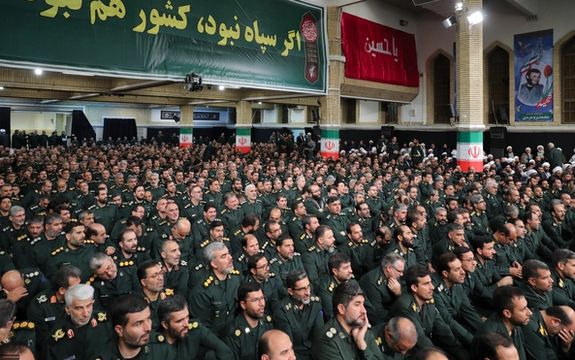
The economic powerhouse of Europe, Germany, along with a number of other European countries are pushing the EU to classify the Iranian regime’s Islamic Revolutionary Guard Corps as a terrorist organization.
The German Press Agency (DPA) reported on Monday that diplomats told the wire service that “Multiple EU countries including Germany are pushing to classify the Islamic Revolutionary Guard Corps (IRGC) as a terrorist organization on the basis of a German court ruling.”
According to the DPA, diplomats emphasized on Monday that the Guard's terror listing would be primarily a symbolic step because there are already EU sanctions against them.
However, a blanket sanction on the IRGC—similar to the EU terror designation of Hamas—would be a powerful move that would adversely affect IRGC-linked structures in the EU, involved in activities such as spying on Iranian dissidents and carrying out terror plots.
The German legal ruling earlier this year is from the High Court in the city of Düsseldorf, stating that a 2022 attack on a synagogue in the city of Bochum was traced to the “Iranian state authorities.”
In March, Iran International reported that after the court ruling, the German Christian Democratic Union MP, Norbert Röttgen, had said, “The IRGC's terror listing must come now. There are enough starting points.”
Since December, the EU’s foreign policy head, Josep Borrell, and German foreign minister , Annalena Baerbock, have claimed there are no legal rulings within the EU that show the IRGC has carried out terrorist attacks within Europe.
A German paper, in December, wrote that a classified EU document states that IRGC can be sanctioned as a terrorist entity in Europe, despite assertions to the contrary by Borrell and Baerbock. Iran International has reported on a 2017 legal case that revealed that the IRGC hired a Pakistani contract killer to assassinate pro-Israel advocates in Europe.
The Trump administration sanctioned the IRGC as a foreign terrorist organization in 2019. When asked what President Biden can do to convince the EU to sanction the IRGC, Jason Brodsky, the policy director for the US-based United Against Nuclear Iran, told Iran International “I think the Biden administration should be making this issue a priority and pushing very hard for the EU and the UK to designate the IRGC as a terrorist organization. This would be a force multiplier in the transatlantic sanctions architecture against Tehran.”
He added “There is strong bipartisan support for the EU and UK to take this step. The US should be making it clear to its allies that not sanctioning the IRGC as a terrorist organization will have ramifications in their relations with the United States.”
Lawmakers from Germany and Austria welcomed the movement in Brussels toward a terror proscription for the IRGC.
Hannah Neumann, a German Green party member of the European parliament, wrote on X: “German court verdict suffices as basis for terror listing of #IRGC, says EU legal service. So, no more excuses @JosepBorrellF And thank you @ABaerbock for continuously pushing this file forward. IRGCterrorists.”
Baerbock is also a member of the Green party.
Ewa Ernst-Dziedzic, a Green party MP in the Austrian parliament in Vienna, wrote on X “No more excuses or after years of standstill, things are finally moving: German court ruling is sufficient as a basis for classifying IRGC as a terrorist organization, says the EU Legal Service. I have visited several times @OeParl in favor of this and would find this step more important than ever in view of current developments. Austria must take a clear stand!”
Rabbi Abraham Cooper, the associate dean of the LA-based human rights organization, Simon Wiesenthal Center, told Iran International that he commends Germany for “taking the lead in a long overdue push to classify Iran’s Islamic Revolutionary Guard for what it is-- a terrorist entity.”
The German media report did not name the other countries supportive of a ban on the IRGC. Borrell, who is widely viewed as sympathetic to the Islamic Republic, has been recalcitrant toward punitive measures targeting the IRGC.
A full terrorism designation imposed on the IRGC would enable European law enforcement personnel greater police and investigatory powers to prosecute Iranian regime officials and organizations.
The classification of the IRGC as a terrorist organization could also have profound effects on European-Iran trade relations. The IRGC is estimated to control over 50% of the economy in the Islamic Republic.
The state of Israel has been advocating for years that the EU outlaw the IRGC. In November, when asked if the EU and Germany should outlaw the IRGC, Lior Haiat, a spokesman for Israel’s foreign ministry, told Iran International “We do. Because it is a terror organization.”
Israel’s special envoy for combating antisemitism, Michal Cotler-Wunsh, also told Iran International in November, that the “IRGC and Hezbollah are terror groups and must be designated as such.”
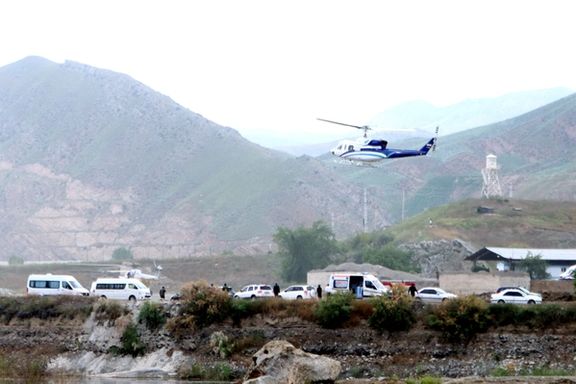
More than a week after the death of Iran's President Ebrahim Raisi, new and conflicting details about the incident continue to surface, leaving the circumstances of the helicopter crash shrouded in uncertainty.
On Friday, the first formal report by the General Staff of the Armed Forces on the helicopter incident was published. Although this report ruled out the possibility of the chopper being shot down, it did not state the main reason for the crash and mentioned that “more time is needed for a definitive conclusion”.
Adding to the perplexity, it has come to light that the President's bodyguard was notably absent from the ill-fated helicopter.
Raisi’s chief of staff’s account vs preliminary official report
An interview with Gholamhossein Esmaeili, Raisi's chief of staff and a member of the president's entourage, has further contributed to the confusion.
In the early hours of May 19th, Iran's President Ebrahim Raisi embarked on a journey, accompanied by his entourage, from Tehran to Tabriz.

Timeline of events on May 19th according to Iran President chief of staff:
6:00 AM (Tehran Time): Iran's president and his entourage flew from Tehran to Tabriz, located in the East Azerbaijan province of northwestern Iran, by plane.
7:15/30 AM: From Tabriz, three helicopters were utilized for a project visit in Agh Band.
9:00 AM: The second leg of the journey proceeded from Agh Band to Khoda Afarin, near the Giz Galasi Dam, with further plans for travel.
1:00 PM: The final leg was supposed to be from Khoda Afarin towards Tabriz, but the helicopter crash prevented the completion of the journey.
1:35 PM: En route to Tabriz, the helicopters attempted to avoid a “cloud Layer” by increasing their altitude. While the first and third helicopters successfully navigated the clouds, the president’s helicopter, flying in the middle, disappeared. It was later discovered to have crashed, resulting in the deaths of all its passengers. Iran President chief of staff stated: "We emerged from the cloud layer very normally, even without any turbulence."

Esmaeili's account highlights two crucial points. The first point is his statement that the "weather was favorable, with no issues”.
Noor News, an agency close to the Supreme National Security Council, also reported that all necessary safety measures had been implemented to ensure the president's helicopter flight was secure.
The short six-item report by the General Staff of the Armed Forces also did not mention weather conditions at the time of the incident and stated on item six of the report that "no suspicious issues were observed in the communications between the control tower and the flight crew." This raises questions about the suddenness of the incident.

Signals from the chopper post-crash
Esmaeili's account also sheds light on his communication with cleric Mohammad Ali Al-Hashem, a passenger aboard the helicopter, post-crash.
Esmaeili explains that he attempted to contact the pilot, but Al-Hashem answered the phone instead. He reveals that he queried Al-Hashem about the incident, to which he responded that “he did not understand what has happened”.
In the interview, he stated that he was in contact with Al-Hashem for three to four hours after the incident. However, the alleged surviving passenger was found dead when rescue teams arrived, although his body was not burned like that of Raisi and others.
While “most likely the transponder system was turned off or that the helicopter did not have one,” as stated by the Turkish transport minister, the questions is if there was a mobile signal for up to three hours after the crash. In that case, why pinpointing the coordinates of the helicopter wreckage took 15 hours?
The mystery of the absent bodyguard
The latest images of Ebrahim Raisi show his bodyguard was almost always at his side. However, the released list of casualties revealed that he was not onboard.
Given that the Bell 212 helicopter can accommodate 15 passengers but only had 8 on board, the question arises: why did Ebrahim Raisi’s personal bodyguard continue the journey in a different helicopter?
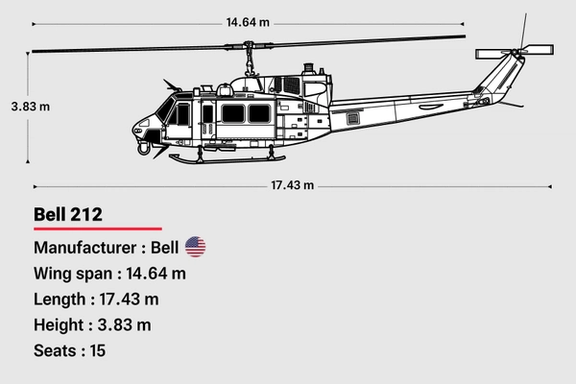
Javad Mehrabi, the bodyguard of Iran's President, continued the journey in one of the other two helicopters accompanying the president.
General Esmaeil Kosari, a former IRGC commander and current member of parliament, dismissed claims about the status of the president's guards, stating, "Some media outlets are fabricating irrelevant statements.
The second guard was in a separate helicopter as there was no necessity for multiple guards in one aircraft."
However, HamMihan Newspaper in Iran reported suggestions that some passengers may have been reassigned to another helicopter at the last minute before the flight. A video report published May 26 by state broadcaster IRIB shows him getting off the President’s chopper during a landing.
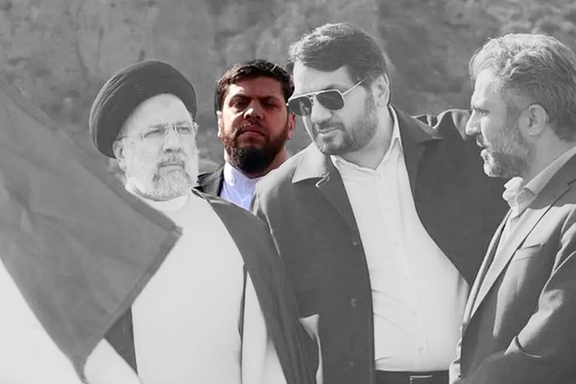
What might have caused the helicopter crash?
Pinpointing the exact cause of the May 19 fatal crash is challenging. Such investigations are long and complex processes. But when it comes to the Iranian government, any such report should be taken with a pinch of salt.
The Armed Forces Staff is the same organization that, after 73 hours of denials, finally admitted that "Ukrainian Airlines flight PS752... was hit [with missiles] due to human error and unintentionally..."
The flight was struck by two missiles from the Revolutionary Guards killing all 176 people on board. Iranian officials attributed the plane crash to technical failure for 73 hours. Canada, Ukraine, Sweden, and Britain are seeking damages for the families of the people on board who were killed and believe that Iran did not conduct a fair, transparent, and impartial investigation and prosecution.
Also, the Ontario Court of Justice ruled in 2023 that the shooting down of Flight PS752 by the Iranian military constitutes "terrorist activity".
Potential causes might include:
1- Weather condition: Some in Iran attribute the crash to adverse weather conditions. A member of the helicopter search and rescue team stated in an exclusive interview with Tasnim News Agency, affiliated with the IRGC, that the "weather factor" can be considered the cause of the crash. However, this contrasts sharply with the account given by the President's chief of staff, who was part of the president's entourage and reported that the "weather was favorable, with no issues."
2- Technical Failure: Catastrophic mechanical failures, like the rear rotor mechanism malfunction that occurred in the King Power Stadium crash, are not unprecedented and could have contributed to the Iran helicopter crash.
3- Human error: Human error remains a constant specter in aviation mishaps. Errors in altitude reading, for example, could have played a role in this incident.
4- Explosive Sabotage: In the General Staff of the Armed Forces of the Islamic Republic of Iran, it is stated that “the pilot established contact with the pilot of another helicopter approximately one and a half minutes before the helicopter crash”. This again reinforces the hypothesis of a sudden and unprecedented incident.
Farzin Nadimi, a Senior Fellow at The Washington Institute, did not rule out the possibility of sabotage in the helicopter crash. He stressed the importance of conducting a thorough investigation and suggested that various types of "small bombs" could have been employed, including remote-controlled or altitude-triggered explosives. Examining the wreckage could yield crucial evidence.
The mysterious death of Yevgeny Prigozhin, who attempted an unsuccessful coup against Russia’s Vladimir Putin and perished in a crash involving his private jet, underscores the impact of such incidents on both leaders and adversaries.
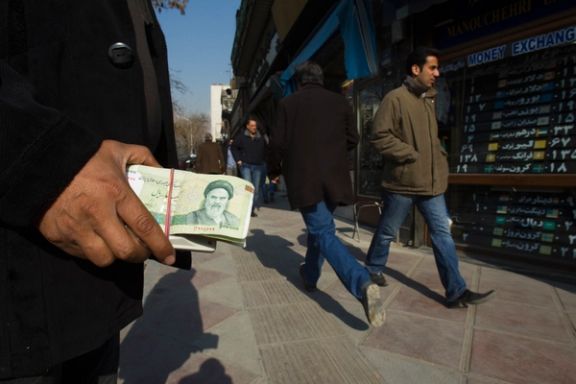
Iran’s battered currency, the rial, has recovered more than half of its losses during May as the likelihood of war with Israel decreased and the US continued negotiations with Tehran.
The sudden death of President Ebrahim Raisi last week in a helicopter crash briefly weakened the national currency, but it recovered surprisingly fast, although it is far from pre-January levels.
The rial, which was trading at around 510,000 per dollar in December 2023, began to fall steadily from early January as tensions rose in the Middle East and Tehran continued to threaten Israel. By mid-March it was trading at around 600,000 to the dollar but fell to 670,000 as Israel attacked Iran’s diplomatic compound in Damascus on April 1.
Two top Revolutionary Guard generals and five other key officers were killed when Israeli missiles flattened a building near the embassy, prompting Iran to vow revenge, and Israel threatening to retaliate.
This raised the likelihood of both an economic and a political crisis for Tehran’s rulers, as the specter of more inflation on top of the current 50-percent annual rate sparked a sense of panic.
Tehran finally delivered on its promise by launching more than 300 drones and missiles against Israel on April 13-14, 99% of which were shot down by Israeli air defenses and allied warplanes.
However, the Israeli response a few days later was very limited and measured, gradually dissipating the fears of a major confrontation.
By late April, the rial began to rise and by mid-May the dollar fell to around 580,000 rials in Tehran’s black market, meaning a strong come back for the rial from the April lows. It has stayed at that level for almost two weeks.
Although the reduction of tensions with Israel is seen by analysts as the main reason for rial’s rebound, government intervention in the markets is always a factor in Tehran.
There are limited sources for the black market to obtain hard currencies, such as US dollars, euros, British pounds or Canadian dollars. The black market’s cash currency flows are mostly from small or individual sources. As a result, when the rial falls sharply and the government decides to intervene, it injects a few tens of millions of US dollars’ worth of hard currencies into the market.
The amount and frequency of these interventions are usually treated as state secrets, but occasionally hints appear in the media.
However, bad news about higher prices for consumers continue to be sporadically reported in Tehran media and on social media. Usually, it takes a few weeks for rial’s fall to impact prices and the annual inflation rate. Local media have reported in the past two weeks have that housing costs and food prices have been rising, with a middle-class family now forced to pay at least $250 a month for rent, which is more than ordinary salaries. Consumption of meat also continues to decline, as one kilogram of meat could cost 5% or more of monthly wages.
The new president, to be elected at the end of June, will face the monumental task of addressing economic challenges that have become increasingly difficult due to ongoing oil-export and banking restrictions. Without exceeding roughly $70 billion in oil exports, the government continually faces significant budget deficits and is forced to print money.
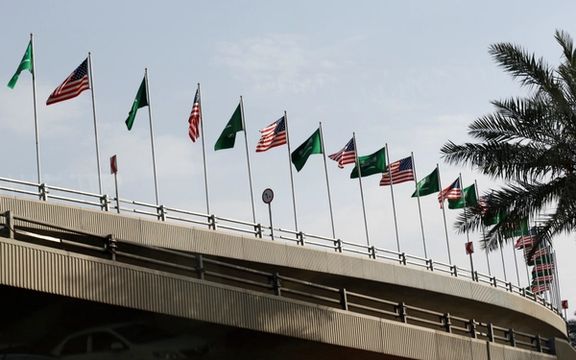
The United States is expected to lift a ban on the sale of offensive weapons to Saudi Arabia, potentially in the coming weeks, the Financial Times reported on Sunday.
Washington has already signaled to Saudi Arabia that it was prepared to lift the ban, the newspaper reported, citing a person familiar with the matter.
Soon after taking office in 2021, Biden adopted a tougher stance over Saudi Arabia's campaign against the Iran-aligned Houthis in Yemen, which has inflicted heavy civilian casualties, and over Riyadh's human rights record, in particular the 2018 killing of Washington Post journalist and political opponent Jamal Khashoggi.
Saudi Arabia, the biggest US arms customer, has chafed under those restrictions, which froze the kind of weapons sales that previous US administrations had provided for decades.
US Secretary of State Antony Blinken on Wednesday said the US and Saudi Arabia were very close to concluding a set of agreements on nuclear energy, security and defense cooperation, the bilateral component of a wider normalisation deal with Riyadh and Israel.
However, lifting the ban on offensive weapons sales were not directly linked to these talks, FT said.
The White House and Saudi Arabia’s government communication office did not immediately respond to a Reuters request for comment.
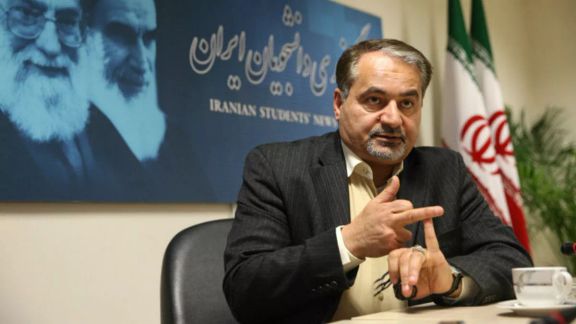
A Berlin-based think tank slammed for hosting a former Iranian ambassador accused of terror ties, has deleted the public announcement of the event after backlash.
The Körber Foundation, founded by a former Nazi, had hosted Princeton academic Hossein Mousavian at a May breakfast event, but after a tide of criticism, the think tank deleted its X post.
Mousavian, who served as Tehran's ambassador to Germany from 1990 to 1997, is accused by activists of having reportedly played a crucial role in the assassinations of at least 24 Iranian dissidents in Europe during the 1990s.
One of the notable incidents was an attack on Berlin restaurant in the 1990s. Four Iranians were assassinated at the Mykonos restaurant by two masked gunmen in a plot sanctioned by the clerical regime’s then-president Rafasanjani, according to a Berlin court.
Lawdan Bazargan who oversees the organization, Alliance Against Islamic Regime of Iran Apologists (AAIRIA), wrote on X, “Deleting your tweet, @KoerberIP does not solve the issue. The fact still remains that you invited Seyed Hossein Mousavian, former ambassador of a brutal gender-apartheid Islamic Regime, who has the blood of many Iranians on his hands, and bragged about it.
Bazargan is leading a campaign to secure Mousavian’s dismissal from his academic job at Princeton University and after having taken a screenshot of the now-deleted Körber Foundation X post, exposed the think tank for hosting the controversial figure linked to the highest echelons of Iran's government.
Körber embedded four photographs of people at the breakfast, including pictures from Mousavian.
Shortly before Körber scrubbed its X post of the Mousavian event, Bazargan wrote “Shame on you @KoerberIP for meeting with Mousavian who at least has the blood of 24 Iranians on his hand. Fire Mousavian.”
The British-American actress and opponent of the clerical government in Tehran, Nazanin Boniadi, posted on X for her over 591,000 followers about the Körber event: “Mousavian was the Islamic Republic’s ambassador to Germany from 1990-97, during which time beloved Iranian dissident Fereydoun Farrokhzad was murdered in Bonn, and Kurdish-Iranian opposition leaders were assassinated in Berlin. Stop platforming him.”
When asked why Körber deleted the X post and for a copy of Mousavian’s talk, Julian Claaßen, a spokesman for Körber, told Iran International, “Dr. Hossein Mousavian was invited to background discussions at Körber-Stiftung in Berlin and Hamburg. Since its inception, Körber-Stiftung has been committed to dialogue, in line with the motto of our founder Kurt A. Körber ‘Talking to each other, not about each other’. Our aim is to explore the scope for political action and to contribute to international understanding, especially in times of acute crisis and conflict.”
Claaßen said discussions take place within Chatham House Rules, meaning the content and statements of individual participants are not disclosed. However, he added, “The discussions last Thursday and Friday centred on Iran's role in regional politics and domestic political developments in the Islamic Republic," claiming that he was also interviewed by staff for the in-house magazine, ‘The Berlin Pulse Express Edition’, which will be published next week.
When pressed about Mousavian’s alleged role in assassinations, his endorsement of the fatwa to murder the British writer Salman Rushdie and his support of the German-designated terror organizations, Hamas and Hezbollah, Claaßen said “we do not comment on political statements made by our guests.” The Körber spokesman also refused to comment on Mousavian’s alleged antisemitism, Mousavian having compared Israel with Nazi Germany on X.
According to the German government’s definition of antisemitism---based on the International Holocaust Remembrance Alliance concept of modern Jew-hatred—Mousavian expressed an antisemitic comparison.
Bazargan told Iran International that “Körber must apologize and change its policy toward the Iranian regime, and start supporting the Woman-Life-Freedom movement led by the youth in Iran. Several Iranians who were shot with pellet bullets and lost their eyes or hands in the recent uprising in Iran are now living in Germany. Körber should invite them and amplify their stories to highlight the true impact of the regime's brutality.”
The think tank was founded by Kurt A. Körber, a member of the Nazi party who worked for Universelle-Werke J. C. Müller & Co. which advanced Hitler’s war goals.
According to the Köber Foundation website, “Up to 3,000 foreign and forced laborers were used for this purpose…He is actively involved in the company’s armaments production.”
Iran International reported in March that Dr. Narges Eskandari, the mayor of Frankfurt in Germany, and a former Iranian political prisoner, said “Seyed Hossein Mousavian, Iran's ambassador at the time, is considered one of the key masterminds behind the attack. He had prior knowledge of the assassination attempt, and evidence implicates the Iranian embassy in the attack. To date, there have been no consequences for Seyed Hossein Mousavian. “
Mousavian is a Middle East Security and Nuclear Policy Specialist in the Program on Science and Global Security at Princeton University where he has been employed since 2009.
In April, over 70 Iranian-Americans, including the Germany-based Parviz Dastmalchi, a survivor of the 1992 Mykonos terrorist attack in Berlin, demonstrated at Princeton against Mousavian. The pro-Iran regime academic lashed out at the dissidents on X for calling on Princeton to fire him.
Körber has hosted Mousavian frequently over the years, including in 2018 and 2017.
Mousavian declined to respond to numerous Iran International requests for comment.